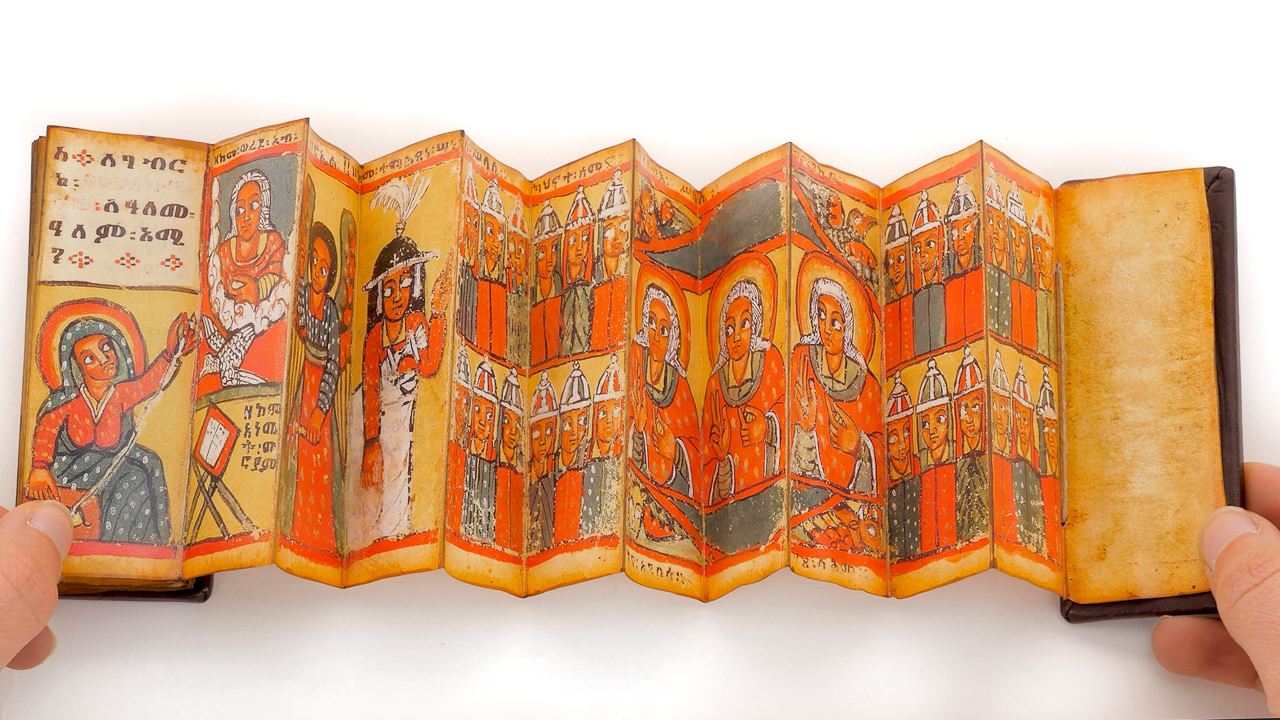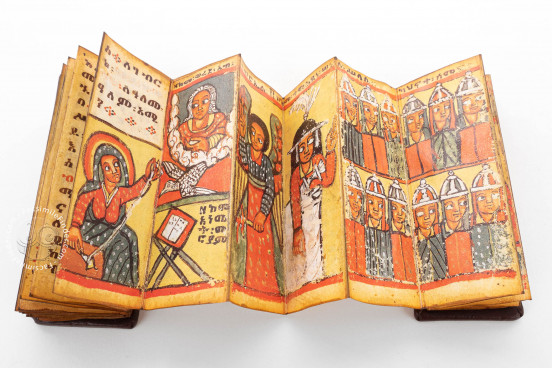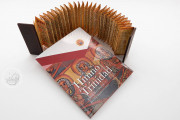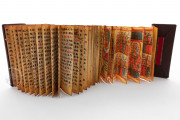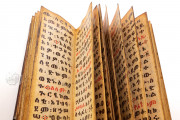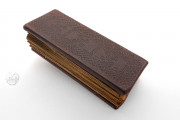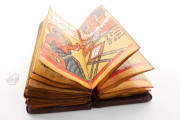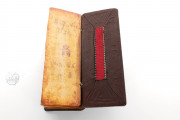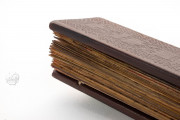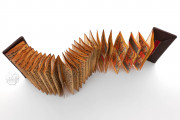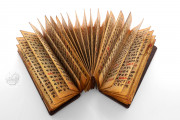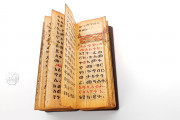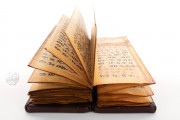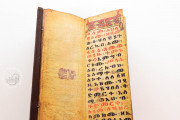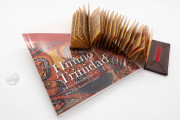The Hymn to the Trinity is one of the smallest treasures preserved in the Biblioteca Nacional de Espana. It is a precious codex of fifty-two pages folded in the form of an acordeón. It is protected by a unique binding specially designed for this type of manuscript, of Ethiopian origin, known as the sänsul.
The sänsul is one of the less common types of Ethiopian books, in a context where codices of various sizes and "magic" scrolls are used as amulets. It was usually made with one or more folded parchment strips, with or without covers, bound together with ties. The earliest known folded books are from the end of the fifteenth century and are commonly of religious content (hagiography, episodes from the life of the Virgin Mary, of Christ, etc.). The oldest examples were probably crafted for a wealthy audience with high-quality production.
A Traditional Hymn of the Ethiopian Orthodox Liturgy
Melke' is a literary genre peculiar to the classical Ethiopic language Ge'ez. It aims to describe and praise the virtues of the Trinity, the Savior, the Virgin Mary, the Archangels, and the most venerated saints of the Ethiopian Synakserium.
This literary genre uses rhythmic, poetic, and symbolic language, in stanzas of between four and six verses, and sometimes more, which always begin with the word "peace".
Each part of the human body, from the head to the feet (one for each stanza) corresponds to the various virtues of praise, and it is connected to passages from the Bible. Each stanza ends with a petition for various graces addressed to the Trinity.
The author, probably a monk who lived in the region of Gondar, represents the penitent and praying Church, and the hymn points out stanza after stanza the creative and saving activity of the Trinity in the world and in the Church. This hymn is part of matins in the Orthodox liturgy of the Ethiopian Church, always sung, and also recited by monks and pious laypersons privately.
Small But Beautiful
The copy held in the Biblioteca Nacional de España (MS Vit. 26-3) consists of a parchment folded folio, measuring a mere 9.5 x 4 cm. The text, copied in Ge'ez language with black ink and carmine, corresponds to the Hymn to the Trinity, one of the earliest texts of the so-called Osirrinco papyri (late eleventh century) – Oxford, Sackler Library, P. Oxy. XV 1785.
There is also a sober decoration of vegetal inspiration, outlined in black with yellow and brown shades, useful to divide the most important parts of this religious invocation.
The document also contains prayers and a hymn of worship dedicated to the Saint Ghebre Menfes Quedus.
The text of the sänsul is arranged on both sides of the parchment. The recto comprises fifty-one columns of sixteen lines each. The verso is made up of forty columns that end before the figurative representation. This composition reduces the text-image relationship to a mere division between the religious invocation and the miniatures, like in most folded books.
Sacred Scenes with Indigenous Influences
The opening scene is that of the Annunciation. This sacred scene featuring the Virgin Mary, the angel Gabriel, and the Holy Spirit is one of the most important iconographic themes of Ethiopian figurative arts. Here it is designed on a tripartite scheme. The Virgin directs her gaze toward the upper part of the composition, where God the Father is surrounded by clouds.
The following scene is a theophanic composition which is the essence of Christian dogma, depicting the Vision of the Holy Trinity: the Father, Son, and Holy Spirit as one God. The vision is placed inside a hexagon that serves as a mandorla. The geometrical figure of the hexagon is inscribed inside a rectangle, whose angles indicate four living beings associated with the four evangelists.
The Holy Trinity is flanked by two symmetrical groups corresponding to the four and twenty priests of the cycle, or elders of the Apocalypse, invested with twenty-four crowns, according to the description given by St. John the Evangelist in the Biblical book of Revelation.
A Story Yet to be Discovered
Despite its fascination for the viewer, this manuscript has been ignored by historiography. The only reference is the brief quotation made by Jesús Dominguez Bordona, in his pioneering work "Manuscritos con pinturas," published in 1933.
Recent studies allowed scholars to recognize that the sänsul must have been made at a later date than those proposed by Bordona. Thanks to stylistic affinities they consider the manuscript datable between the seventeenth and early eighteenth century.
Numerous artistic testimonies have survived since the seventeenth-century foundation of the kingdom of Gondar, whose capital was located north to Lake Tana and continued to be a cultural and musical innovation center even after the decline of the reign of Gondar.
The binding is of brown leather with geometric ornamental blind-tooling.
We have 1 facsimile edition of the manuscript "Hymn to the Trinity": Himno a la Trinidad facsimile edition, published by Orbis Mediaevalis, 2020
Request Info / Price
